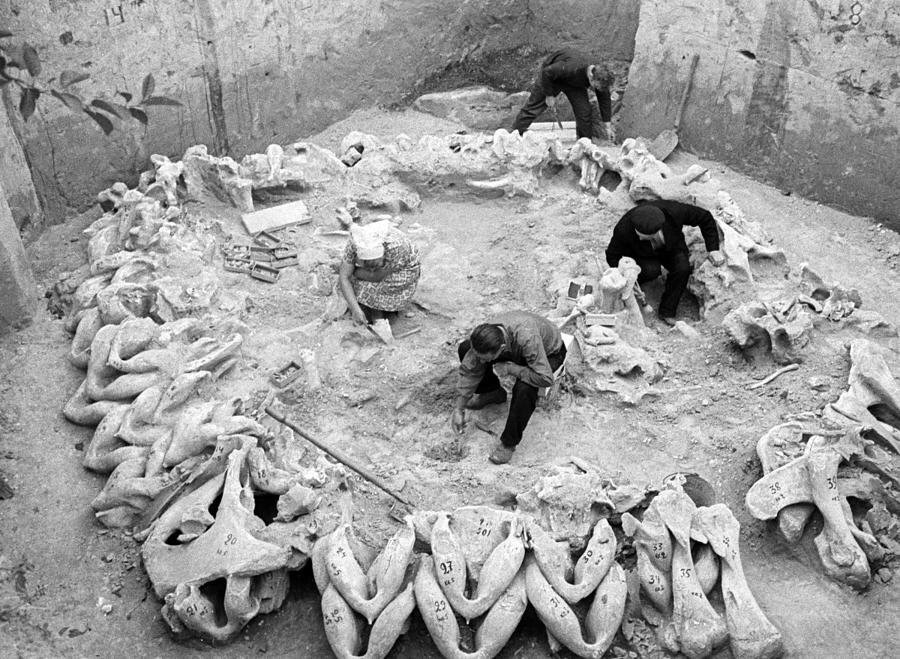In 1965 in central Ukraine, a farmer expanding his cellar dug up the lower jawbone of a mammoth and other large bones. Further excavations revealed four mammoth bone huts dating back 15,000 years ago and consisting of a total of 149 bones used in the construction. The archaeologists established that The Mezhyrich site (the site was named after the village where the discovery was made) was a winter settlement of Paleolithic hunters. Some of the unique artifacts found at the site include a schematic map carved out on a fragment of a mammoth tusk. It is considered to be the oldest map ever found on the territory of Ukraine. There were also what scholars think were the remains of a “drum” made of a mammoth skull painted with a pattern of red ochre dots and lines. Some of the huts found at Mezhyrich are preserved in the National Museum of Natural History of the National Academy of Sciences of Ukraine (title image) and at the American Museum of Natural History in New York.
The ‘100 Great Archaeological Discoveries’ book published in 1995 calls the mammoth bone huts “the most spectacular archaeological discoveries of the Ice Age” that “represent the most ancient human architecture known on earth“. The book provides other insights into the discovery: “They are composed of several hundred bones and tusks arranged in a rough circle, between 6 and 10 m (20 and 33 ft) in diameter. A hearth typically lies near the center of the former dwelling, and stone tools and other debris are scattered within and outside the structure. Large pits filled with stone tools, bone fragments and ash have been found near the houses… Considerable effort must have been required to assemble these structures. Even in a dry state, large mammoth bones weigh hundreds of pounds. It has been suggested that the bones and tusks were recovered from hunting episodes in which entire herds of adult mammoths and their young were slaughtered. A more likely explanation is that they were gathered from natural accumulations of bones perhaps at the mouths of streams and gullies near the sites. The primary purpose of the mammoth-bone dwellings which were presumably covered with animal skins, was probably shelter from extreme cold and high winds. Some archaeologists, impressed with the size and appearance of the structures, have argued that they also possess religious or social significance. They have been described as the earliest examples of ‘monumental architecture’ as evidence of increased social complexity and status differentiation during the final phase of the Ice Age”.
Excavations at the Mezhyrich site:

The “Cradle of Civilizations” book has more material about other Mammoth Bone huts discovered in Ukraine.